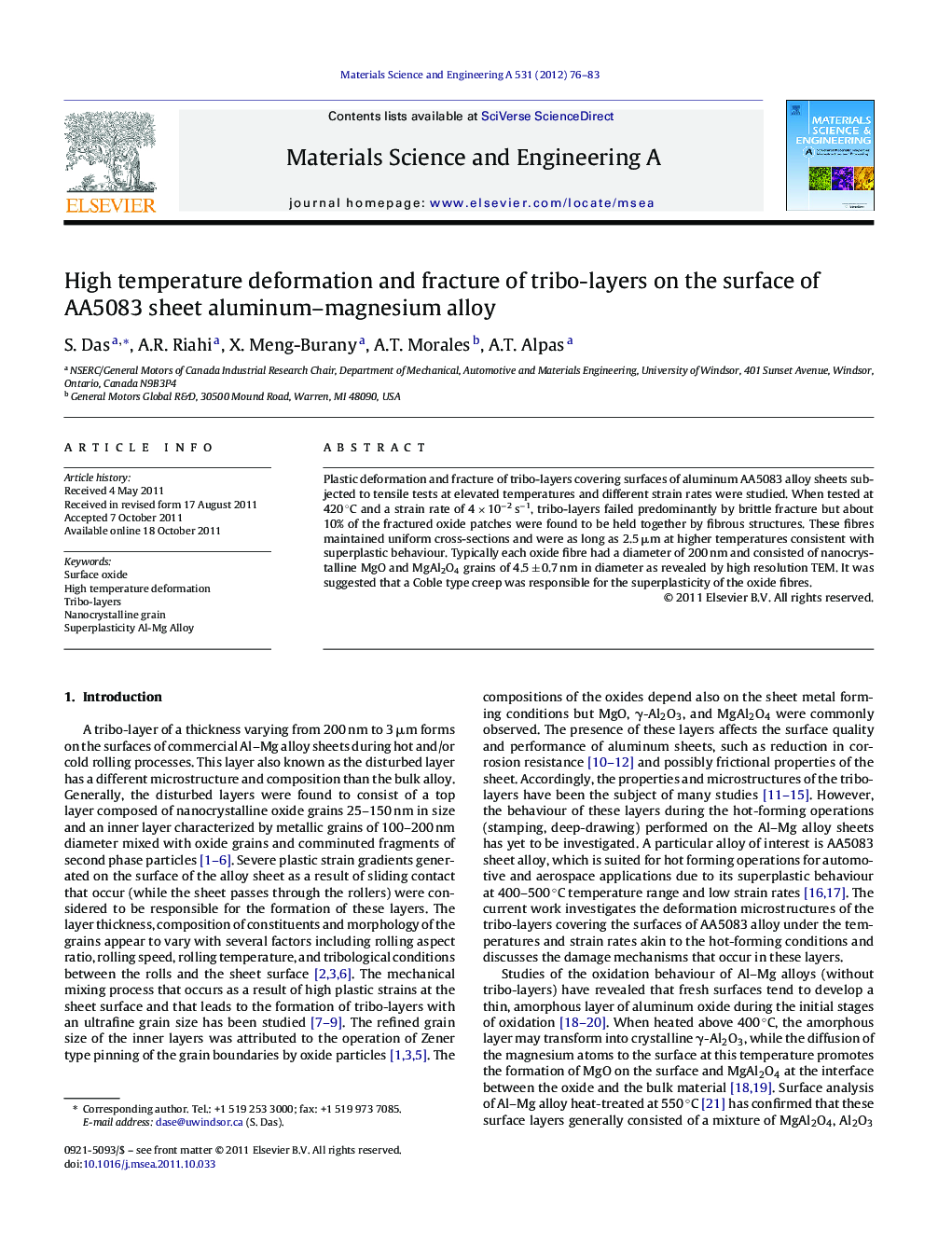| Article ID | Journal | Published Year | Pages | File Type |
|---|---|---|---|---|
| 1577933 | Materials Science and Engineering: A | 2012 | 8 Pages |
Plastic deformation and fracture of tribo-layers covering surfaces of aluminum AA5083 alloy sheets subjected to tensile tests at elevated temperatures and different strain rates were studied. When tested at 420 °C and a strain rate of 4 × 10−2 s−1, tribo-layers failed predominantly by brittle fracture but about 10% of the fractured oxide patches were found to be held together by fibrous structures. These fibres maintained uniform cross-sections and were as long as 2.5 μm at higher temperatures consistent with superplastic behaviour. Typically each oxide fibre had a diameter of 200 nm and consisted of nanocrystalline MgO and MgAl2O4 grains of 4.5 ± 0.7 nm in diameter as revealed by high resolution TEM. It was suggested that a Coble type creep was responsible for the superplasticity of the oxide fibres.
Graphical abstractFigure optionsDownload full-size imageDownload as PowerPoint slideHighlights► Fibre formation in the tribo-layer of an AA5083 alloy subjected to high temperature deformation. ► Characterization of fibres’ structure using FIB and HRTEM. ► Diffusional flow prompted by nano-size grains was responsible for superplasticity in fibre.
